Activity Intensity

Is there a specific duration or intensity of exercise needed to improve immune function ?
The relationship between exercise and immune function is complex, but research suggests that regular physical activity can enhance the immune system. However, both the duration and intensity of exercise play significant roles in achieving this beneficial effect. The American Heart Association recommends at least 150 minutes of moderate-intensity aerobic activity or 75 minutes of vigorous-intensity activity per week for adults. Engaging in prolonged periods of endurance exercise can temporarily suppress immune function due to increased stress on the body. Light activities like walking or yoga can still offer immune benefits by reducing stress and promoting overall health. Regular moderate to high-intensity exercises, such as jogging, cycling, or strength training, are generally considered optimal for enhancing immune function. Adequate rest and recovery are crucial for maintaining a healthy immune system. Combining different types of exercises (aerobic, strength training, flexibility work) can provide a well-rounded approach to enhancing immune function. Staying hydrated and consuming a balanced diet rich in nutrients supports both exercise performance and immune health. Other lifestyle habits, including sleep quality, stress management, and avoidance of harmful substances, also play a vital role in supporting immune function alongside exercise.

How does high-intensity interval training (HIIT) affect cardiorespiratory fitness ?
High-intensity interval training (HIIT) is a form of exercise that involves short bursts of intense activity followed by periods of rest or low-intensity exercise. This type of training can improve cardiorespiratory fitness by increasing the heart rate and improving blood flow throughout the body, leading to improved muscle performance and endurance. HIIT also helps to burn calories and fat, making it an effective way to promote weight loss. Additionally, HIIT workouts can be done in a shorter amount of time than other forms of exercise, making it a great option for those who are short on time but still want to stay active and healthy. Overall, incorporating HIIT into your workout routine can provide numerous benefits for your cardiorespiratory fitness and overall health.

Is high-intensity interval training (HIIT) beneficial for reducing stress ?
The text discusses the potential benefits of High-Intensity Interval Training (HIIT) for stress reduction, including releasing endorphins, improving cardiovascular health, boosting self-confidence, enhancing focus and concentration, and providing a sense of accomplishment. It also provides tips for incorporating HIIT into a routine, such as starting slowly, choosing enjoyable activities, setting realistic goals, incorporating recovery time, and seeking professional guidance.

How can I avoid injury after a high-intensity workout
To avoid injury after a high-intensity workout, it is important to warm up properly, stretch, use proper form, take breaks, stay hydrated, and wear appropriate clothing. These tips will help reduce the risk of injury and allow you to continue enjoying the benefits of high-intensity workouts.

How much exercise is needed to see mental health benefits ?
Regular physical activity is known to improve mental health, but the amount of exercise needed varies based on individual factors. The WHO recommends at least 150 minutes of moderate-intensity aerobic activity and muscle-strengthening activities twice a week for adults. Even small amounts of light activity can have mental health benefits, with moderate-intensity activities like brisk walking improving outcomes significantly. Consistency is key, and personalizing your exercise routine based on preferences and capabilities is essential.
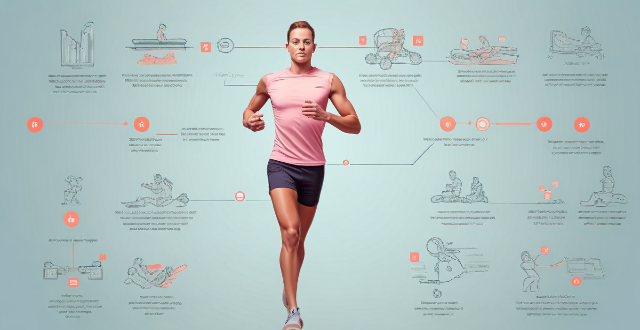
How does exercise physiology explain the benefits of high-intensity interval training (HIIT) ?
High-intensity interval training (HIIT) is a form of exercise that involves short, intense bursts of activity followed by periods of rest or low-intensity exercise. From an exercise physiology perspective, HIIT offers numerous benefits, including increased metabolic rate, improved cardiovascular health, muscle development and endurance, favorable hormonal responses, mental health advantages, reduced injury risk, and time efficiency. These factors make HIIT a popular and effective method for achieving various fitness goals.

How often should seniors engage in aerobic activities for heart health ?
Engaging in regular aerobic activities is crucial for seniors to maintain heart health and overall well-being. The American Heart Association recommends at least 150 minutes of moderate-intensity or 75 minutes of vigorous-intensity aerobic activity per week, spread throughout the week. For seniors, this could include brisk walking, swimming, or biking for at least 30 minutes five days a week (moderate intensity) or running and fast cycling for at least 25 minutes three days a week (vigorous intensity), depending on their capability and medical restrictions. Regular aerobic activity offers numerous benefits for seniors, including improved cardiovascular fitness, better blood pressure and cholesterol levels, weight management, increased muscular strength and endurance, and boosted mental health. However, safety precautions should be taken, such as consulting with a healthcare provider before starting an exercise program, starting slowly, choosing low-impact exercises, staying hydrated, wearing appropriate clothing and footwear, and monitoring bodily responses to the activity. By following these guidelines and taking necessary precautions, seniors can significantly improve their quality of life and maintain their independence longer.

Can regular physical activity prevent depression ?
Regular physical activity can reduce depression risk by releasing endorphins, improving sleep, and boosting self-esteem. Start with 30 minutes daily of activities like walking or swimming, and consider joining a fitness class for motivation. Gradually increase intensity and listen to your body to avoid overexertion.

Are there any risks associated with high-intensity workouts for seniors, especially in a group setting ?
High-intensity workouts in a group setting pose certain risks for seniors, including cardiovascular strain, musculoskeletal stress, overexertion and fatigue, and social and psychological factors. To minimize these risks, seniors should consult with a healthcare professional, start slowly and gradually increase intensity, focus on low-impact activities, stay hydrated and monitor temperature, wear appropriate footwear and clothing, listen to their body, and seek supervision from qualified instructors.

Can dehydration really cause muscle cramps during physical activity ?
Dehydration can lead to muscle cramps during physical activity due to loss of essential electrolytes and reduced oxygen supply to muscles. Signs of dehydration include thirst, dark urine, fatigue, dizziness, dry mouth, headache, and constipation. To prevent dehydration and muscle cramps, stay hydrated, eat a balanced diet rich in electrolytes, stretch before and after exercise, gradually increase intensity, and rest when needed.

Can regular physical activity reduce anxiety levels ?
Regular physical activity can help reduce anxiety levels by improving mood, reducing stress hormones, promoting better sleep, increasing self-esteem and confidence, and providing social support. Engaging in at least 30 minutes of moderate-intensity exercise per day can significantly reduce anxiety symptoms.

Can regular physical activity help in reducing stress and anxiety ?
Regular physical activity can help reduce stress and anxiety by promoting the release of endorphins, improving sleep quality, and boosting self-esteem. Aerobic exercises like running, swimming, or cycling are particularly effective because they increase heart rate and circulation, leading to improved oxygenation of the brain. Yoga and tai chi focus on breathing and relaxation techniques that can also help reduce stress and anxiety. The American Heart Association recommends at least 150 minutes of moderate-intensity aerobic exercise or 75 minutes of vigorous-intensity aerobic exercise per week for adults. Finding an exercise routine that works for you and that you enjoy is key to sticking with it over time.
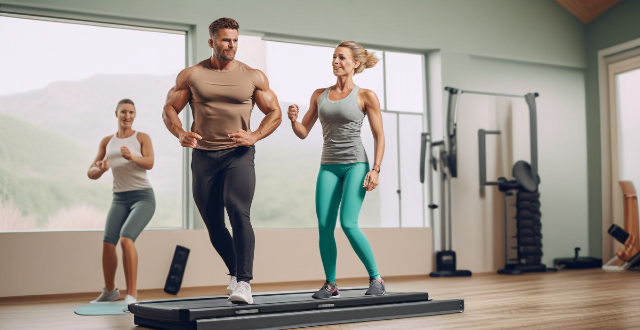
Is it necessary to do a warm-up even for low-intensity workouts ?
A proper warm-up is crucial for any workout, including low-intensity exercises. It increases blood flow and oxygenation, raises muscle temperature, improves range of motion, primes the nervous system, reduces injury risk, and boosts performance. Even for gentle activities like walking or yoga, a warm-up enhances mental focus, gradually activates muscles, promotes consistency, supports joint health, and eases into stretching. Warm-up ideas include walking, dynamic stretching, Tai Chi movements, Pilates exercises, and deep breathing or meditation. Incorporating a warm-up before any workout is essential for maximizing performance, reducing injury risk, and enhancing overall health benefits.

Can physical activity reduce the risk of heart disease ?
Regular physical activity can significantly reduce the risk of heart disease by improving blood circulation, strengthening heart muscles, and reducing major risk factors such as high blood pressure, high cholesterol, and diabetes. Recommended types of exercise include aerobic activities and strength training. Following guidelines from health organizations like the WHO can help maintain cardiovascular health.

How can people with disabilities incorporate physical activity to improve their mental well-being ?
Physical activity is crucial for everyone's mental well-being, including those with disabilities. Engaging in physical activities can help reduce stress, anxiety, and depression while improving mood, self-esteem, and overall quality of life. Here are some ways people with disabilities can incorporate physical activity into their lives to improve their mental well-being: start slowly and gradually increase intensity; find an appropriate exercise routine; set realistic goals; incorporate mindfulness techniques; seek support from peers and professionals; make it fun!

How does climate variability impact the frequency and intensity of extreme weather events like floods and hurricanes ?
Climate variability, which can be natural or human-induced, has a significant impact on the frequency and intensity of extreme weather events such as floods and hurricanes. Changes in rainfall patterns, sea level rise, and land use changes can increase the risk of flooding, while warmer ocean temperatures, atmospheric conditions, and El Niño Southern Oscillation (ENSO) can affect hurricane formation and intensity. As our planet continues to warm due to human activities, it is crucial that we take steps to mitigate the impacts of climate change and adapt to its effects on our environment and communities.

Can regular physical activity improve mental health ?
Regular physical activity can improve mental health by reducing the risk of depression and anxiety, enhancing self-esteem and cognitive function, improving sleep quality, and reducing stress. Practical recommendations for incorporating exercise into daily routines include starting small, finding enjoyable activities, setting realistic goals, making it social, incorporating strength training, staying consistent, listening to your body, and consulting with professionals.
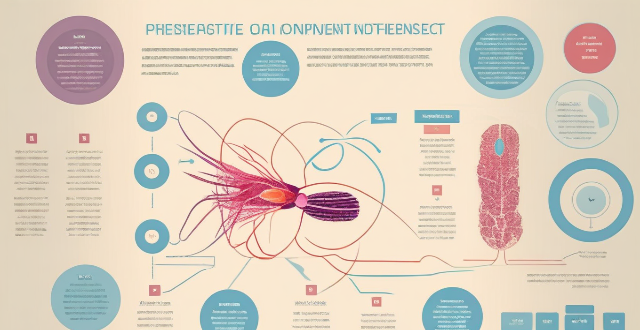
How does consistent physical activity affect the immune system in relation to chronic disease prevention ?
The article discusses the impact of consistent physical activity on the immune system and its role in preventing chronic diseases. It explains that regular exercise can increase the number and activity of immune cells, reduce inflammation, and improve overall health. The article also provides recommendations for exercise and emphasizes the importance of incorporating physical activity into one's lifestyle to prevent chronic diseases and improve well-being.

How does music influence motivation during physical activity ?
Music has a significant impact on motivation during physical activity. Fast-paced music increases energy levels, slow-paced music promotes relaxation, and enjoyable music enhances mood. Music can also distract from pain and fatigue, and personal preference plays a role in its effectiveness. Incorporating music into workout routines can make exercise more enjoyable and lead to better results.

Is it safe for elderly people to engage in high-intensity workouts ?
The safety of high-intensity workouts for elderly people depends on various factors such as health status, fitness level, balance and coordination, recovery time, and necessary modifications and adaptations. It is essential to consult with a healthcare professional before starting any exercise program.

How long should my aerobic workouts be ?
Aerobic exercises, or cardio workouts, are vital for overall health and fitness. The American Heart Association recommends at least 150 minutes of moderate-intensity activity or 75 minutes of vigorous activity per week. This can be broken down into shorter sessions throughout the day. Starting slow and gradually increasing duration and intensity is advised. Mixing up activities helps prevent injury and keeps workouts interesting. Benefits include improved cardiovascular health, weight management, mood enhancement, and a stronger immune system. Always consult with a healthcare professional before starting any new exercise regimen.

How to choose the right extracurricular activity for your child ?
Choosing the right extracurricular activity for your child is crucial for their development and well-being. Consider your child's interests, skills, and abilities, evaluate the time commitment and logistics, seek recommendations and read reviews, and involve your child in the decision-making process to help them choose an activity they will enjoy and benefit from.

How does hydration affect physical activity ?
Hydration is crucial for physical activity, affecting performance, endurance, and well-being. It regulates body temperature through sweating and heat tolerance, supports energy production and recovery, lubricates joints, maintains blood volume for heart function, and ensures mental clarity. Dehydration can lead to decreased performance, impaired thermoregulation, cardiovascular strain, and reduced cognitive abilities. To maintain hydration during physical activity, strategies include pre-activity hydration, regular fluid intake during exercise, post-activity rehydration, electrolyte balance, monitoring urine color, listening to thirst signals, and avoiding diuretics.

What are the benefits of interval training for runners ?
Interval training is a method of exercise that involves alternating periods of high-intensity activity with periods of low-intensity activity or rest. For runners, this means alternating between running at a fast pace and jogging or walking. Here are some benefits of interval training for runners: 1. Improved Cardiovascular Fitness: Interval training can help improve cardiovascular fitness by increasing the heart rate and breathing rate during the high-intensity intervals. This can lead to improved endurance and stamina, allowing runners to run longer distances without getting tired as quickly. 2. Fat Loss: Interval training is an effective way to burn fat and lose weight. The high-intensity intervals cause the body to burn more calories than steady-state cardio exercises like jogging or running at a consistent pace. This can lead to faster weight loss and a leaner physique. 3. Increased Speed and Power: Interval training can also help increase speed and power in runners. By pushing the body to its limits during the high-intensity intervals, runners can improve their muscle strength and power, which can lead to faster running times and better performance in races. 4. Time Efficiency: Interval training is a time-efficient way to train for runners. Because it involves short bursts of high-intensity activity, it can be done in less time than traditional steady-state cardio exercises like jogging or running at a consistent pace. This makes it an ideal workout for busy athletes who want to maximize their time spent exercising. 5. Reduced Risk of Injury: By incorporating periods of low-intensity activity or rest into their workout routine, runners can reduce their risk of injury from overuse or repetitive strain injuries. This is because interval training allows the body to recover between high-intensity intervals, reducing the stress on joints and muscles.

Can physical activity improve mental health ?
Physical activity has been found to significantly improve mental health by enhancing self-efficacy and stress self-management skills. Research shows that engaging in physical activities can lead to a sense of accomplishment, boosting an individual's confidence in their abilities, which in turn fosters better stress management and contributes to enhanced mental well-being. This relationship is particularly important for adolescents, a demographic vulnerable to mental health challenges. Future research should focus on identifying specific types of physical activities that have a greater potential to enhance these skills, guiding the development of targeted interventions aimed at improving mental health through physical activity.

Does high-intensity interval training (HIIT) have specific benefits for chronic disease prevention ?
High-intensity interval training (HIIT) offers numerous benefits for chronic disease prevention, including improved cardiovascular health, enhanced glucose control, reduced inflammation, increased muscle mass and strength, and improved mental health outcomes. To incorporate HIIT into a healthy lifestyle, start slowly, choose the right exercises, include other forms of exercise, and consult with a health professional.
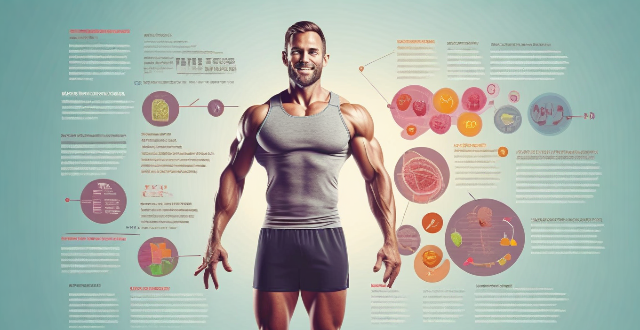
Is there a specific amount of exercise needed per week to see mental health benefits ?
The article discusses the importance of exercise for mental health and explores if there is a specific amount of exercise needed per week to see mental health benefits. It mentions that various health organizations have established guidelines for the recommended amount of exercise per week for adults, focusing on physical health outcomes but also acknowledging the mental health benefits associated with regular exercise. The article suggests that engaging in at least 150 minutes of moderate-intensity exercise per week can lead to significant improvements in mental health, alternatively performing at least 75 minutes of vigorous-intensity exercise per week can also yield positive results. A combination of moderate and vigorous exercises can provide a well-rounded approach to enhancing mental well-being.

Is high-intensity interval training (HIIT) more effective for mental health than steady-state cardio ?
This article explores whether high-intensity interval training (HIIT) is more effective for mental health than steady-state cardio. HIIT involves short bursts of intense activity followed by periods of rest or low-intensity activity, while steady-state cardio involves maintaining a consistent level of activity for an extended period. Both types of exercise offer benefits for mental health, such as improved mood, reduced anxiety and stress, increased self-efficacy, relaxation, and social opportunities. However, they may appeal to different individuals based on their preferences and goals. Incorporating both types of exercise into a regular routine can provide the most comprehensive benefits for mental health.

Does regular physical activity prevent burnout ?
Regular physical activity can help prevent burnout by boosting mood, reducing stress, improving sleep quality, enhancing cognitive function, and promoting social interaction. However, it should be part of a broader approach to managing stress and preventing burnout.
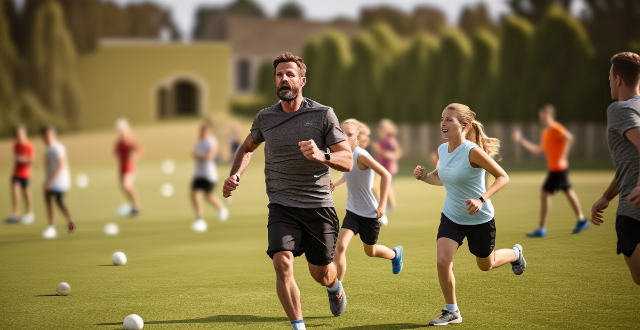
How long should a warm-up session typically last before engaging in sports ?
Warming up is crucial for sports to prevent injuries and prepare the body. The duration varies by sport type, fitness level, and activity intensity, generally lasting 5-15 minutes. Effective warm-ups include low-intensity activities, dynamic stretches, and sport-specific exercises.